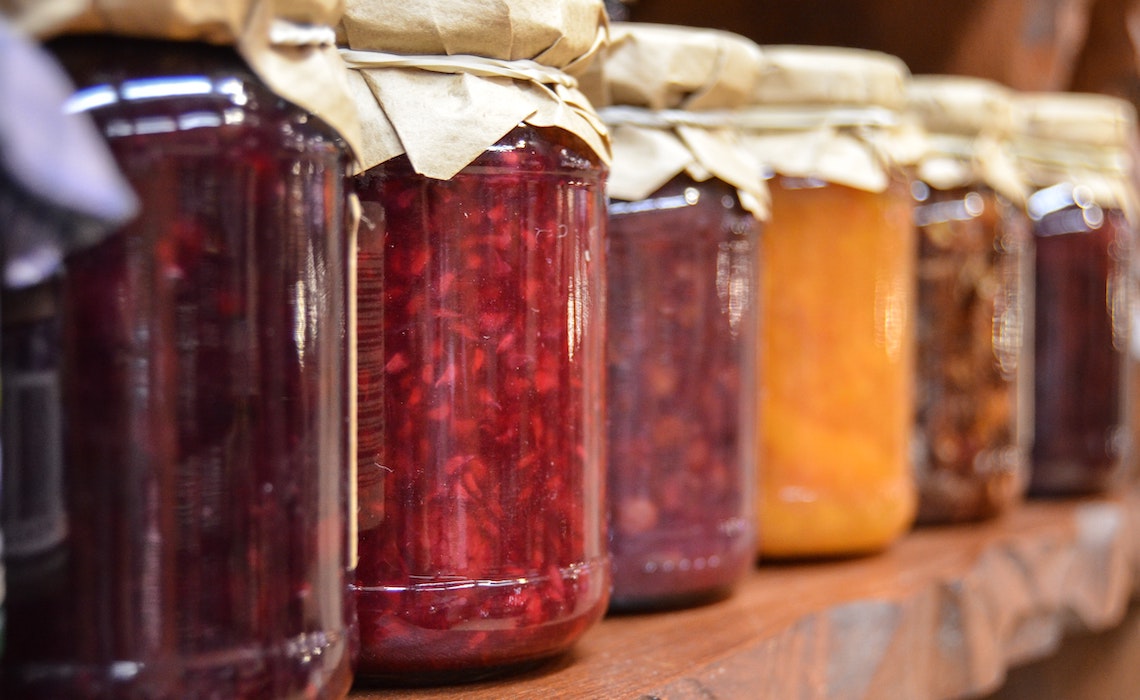Want to learn more about Amish traditions, culture, and heritage? Want to see how The Amish Village changes over the seasons? We pack our blog with helpful articles all about the Amish culture and some news about The Amish Village.
Discover the Delightful, Rich Tradition of Amish Food Canning
 Canning is a method of food preservation that is very popular among the Amish community. It plays an important role in providing nourishment over the winter and ensuring that food is plentiful all year long.
Canning is a method of food preservation that is very popular among the Amish community. It plays an important role in providing nourishment over the winter and ensuring that food is plentiful all year long.
Before we learn about Amish canning practices, let’s take a look at the history of food preservation.
History of Food Canning
The history of food canning started thousands of years ago with people drying, smoking, and salting food in order to extend the shelf life of perishable food.
In the late 18th and early 19th centuries, new canning methods emerged when there was an increased need to preserve food for armies of soldiers who were making long treks.
In 1810, British merchant Peter Durand received a patent for using tin-plated iron cans to preserve food. Soon after, French scientist Louis Pasteur developed pasteurization techniques that further improved food preservation methods. And decades later, commercial canning became popular.
Today, food canning is a highly sophisticated industry. But despite all the modern methods that are now available, the Amish have kept their canning techniques simple – just like their way of life.
How Do the Amish Can Their Food?
The Amish community’s approach to canning reflects their strong heritage, connection to their land, and commitment to sustainable living.
The biggest benefit of canning is that it allows seasonal and locally grown produce to be preserved and eaten year-round. It also helps reduce food waste.
Recipes are usually passed down through generations, and the history and methods of canning can vary among Amish communities depending on the region, agricultural landscape, and family preferences.
Simple tools and equipment are used in Amish canning such as cast-iron or wood-fired stoves and essential supplies like glass mason jars with lids and bands, a large stockpot, a funnel for filling jars, and a ladle for transferring liquids.
The Amish canning process hasn’t changed much over the decades, although some may now use a propane-powered or generator-powered stove depending on what their community allows.
Canned Favorites of the Amish
When visiting one of the many locally-owned food markets throughout Lancaster County, you will likely see Amish-made canned products on the store shelves. Here are examples of some popular Amish canning foods:
Jams and Jellies. Strawberry, raspberry, blackberry, and peach are a few favorites. They’re typically enjoyed as a spread on bread or biscuits.
Pickles. Pickling is a very common Amish canning practice. They often can cucumbers to make dill or bread and butter pickles. Red beet eggs are another popular pickled delicacy in Lancaster County.
Relishes. Amish relish is made by combining a variety of chopped vegetables and spices. It’s often used to add flavor or texture to a dish. Ever heard of chow chow? It’s a popular pickled relish that includes green beans, lima beans, peppers, carrots, corn, and cauliflower.
Salsas. Tomato-based salsas and fruit salsas are canned food items that can be used as a condiment, topping, or recipe ingredient.
Tomato Products. Canned tomatoes, tomato sauce, and tomato paste are staples in Amish pantries. They often form the base for soups and stews.
Canned Fruits & Vegetables. Peaches, pears, apples, and cherries are canned to enjoy year-round. Green beans, corn, peas, and carrots are common canned vegetables.
Sauerkraut. Fermented foods like sauerkraut are another popular canning tradition with the Amish. It’s made by fermenting finely chopped cabbage.
Apple Butter. Apple Butter is popular among visitors to Lancaster County. It’s a thick, spiced spread that is made by cooking down apples until they’re caramelized. It can be used in both sweet and savory dishes.
Meats. Yes, you read that right – meats can be canned! Many Amish communities can beef, pork, and chicken so they have a healthy source of protein even when fresh meat isn’t available.
Visit the Amish Village to Learn More!
Want to learn more about Amish cooking? Enjoy our Amish Farmhouse & Village Tour and be guided through a real Amish kitchen by one of our tour guides. You’ll also visit our Amish barn and farm animals, one-room schoolhouse, blacksmith shop, a working windmill, and more.
You can also experience the local Amish area with our Backroads Bus Tour, where you’ll enjoy a 90-minute bus tour on Lancaster County backroads while learning all about the Amish.
The fall season is a fantastic time to visit Lancaster County. Stop by soon!


